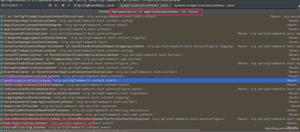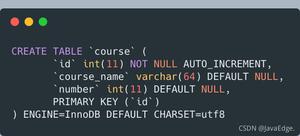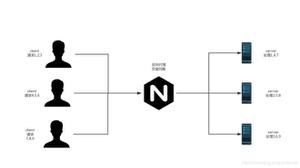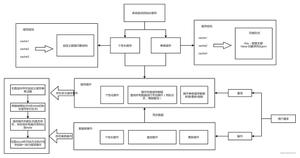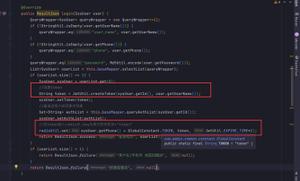Spring在Bean中注入集合
本文内容纲要:Spring在Bean中注入集合
以下内容引用自http://wiki.jikexueyuan.com/project/spring/injecting-collection.html:
如果你想传递多个值,如Java Collection类型List、Set、Map和Properties,Spring 提供了四种类型的集合的配置元素,如下所示:
| 元素 | 描述 |
|---|---|
| <list> | 它有助于连线,如注入一列值,允许重复。 |
| <set> | 它有助于连线一组值,但不能重复。 |
| <map> | 它可以用来注入键值对的集合,其中键和值可以是任何类型。 |
| <props> | 它可以用来注入键值对的集合,其中键和值都是字符串类型。 |
您可以使用或
例子:
pom.xml:
<project xmlns="http://maven.apache.org/POM/4.0.0" xmlns:xsi="http://www.w3.org/2001/XMLSchema-instance" xsi:schemaLocation="http://maven.apache.org/POM/4.0.0 http://maven.apache.org/xsd/maven-4.0.0.xsd">
<modelVersion>4.0.0</modelVersion>
<groupId>com.jsoft.testspring</groupId>
<artifactId>testinjectioncollection</artifactId>
<version>0.0.1-SNAPSHOT</version>
<packaging>jar</packaging>
<name>testinjectioncollection</name>
<url>http://maven.apache.org</url>
<properties>
<project.build.sourceEncoding>UTF-8</project.build.sourceEncoding>
</properties>
<dependencies>
<dependency>
<groupId>junit</groupId>
<artifactId>junit</artifactId>
<version>3.8.1</version>
<scope>test</scope>
</dependency>
<!-- Spring Core -->
<!-- http://mvnrepository.com/artifact/org.springframework/spring-core -->
<dependency>
<groupId>org.springframework</groupId>
<artifactId>spring-core</artifactId>
<version>4.1.4.RELEASE</version>
</dependency>
<!-- Spring Context -->
<!-- http://mvnrepository.com/artifact/org.springframework/spring-context -->
<dependency>
<groupId>org.springframework</groupId>
<artifactId>spring-context</artifactId>
<version>4.1.4.RELEASE</version>
</dependency>
</dependencies>
</project>
JavaCollection.java:
package com.jsoft.testspring.testinjectioncollection;import java.util.List;
import java.util.Map;
import java.util.Properties;
import java.util.Set;
public class JavaCollection {
private List addressList;
private Set addressSet;
private Map addressMap;
private Properties addressProp;
public void setAddressList(List addressList) {
this.addressList = addressList;
}
public List getAddressList() {
System.out.println("List :" + addressList);
return addressList;
}
public void setAddressSet(Set addressSet) {
this.addressSet = addressSet;
}
public Set getAddressSet() {
System.out.println("Set :" + addressSet);
return addressSet;
}
public void setAddressMap(Map addressMap) {
this.addressMap = addressMap;
}
public Map getAddressMap() {
System.out.println("Map :" + addressMap);
return addressMap;
}
public void setAddressProp(Properties addressProp) {
this.addressProp = addressProp;
}
public Properties getAddressProp() {
System.out.println("Property :" + addressProp);
return addressProp;
}
}
beans.xml:
<?xml version="1.0" encoding="UTF-8"?><beans xmlns="http://www.springframework.org/schema/beans"
xmlns:xsi="http://www.w3.org/2001/XMLSchema-instance"
xsi:schemaLocation="http://www.springframework.org/schema/beans
http://www.springframework.org/schema/beans/spring-beans.xsd">
<bean id="javaCollection" class="com.jsoft.testspring.testinjectioncollection.JavaCollection">
<!-- list -->
<property name="addressList">
<list>
<value>INDIA</value>
<value>Pakistan</value>
<value>USA</value>
<value>USA</value>
</list>
</property>
<!-- set -->
<property name="addressSet">
<set>
<value>INDIA</value>
<value>Pakistan</value>
<value>USA</value>
<value>USA</value>
</set>
</property>
<!-- map -->
<property name="addressMap">
<map>
<entry key="1" value="INDIA"/>
<entry key="2" value="Pakistan"/>
<entry key="3" value="USA"/>
<entry key="4" value="USA"/>
</map>
</property>
<!-- property -->
<property name="addressProp">
<props>
<prop key="one">INDIA</prop>
<prop key="one">INDIA</prop>
<prop key="two">Pakistan</prop>
<prop key="three">USA</prop>
<prop key="four">USA</prop>
</props>
</property>
</bean>
</beans>
App.java:
package com.jsoft.testspring.testinjectioncollection;import org.springframework.context.ApplicationContext;
import org.springframework.context.support.ClassPathXmlApplicationContext;
/**
* Hello world!
*
*/
public class App
{
public static void main( String[] args )
{
ApplicationContext context = new ClassPathXmlApplicationContext("beans.xml");
JavaCollection jc=(JavaCollection)context.getBean("javaCollection");
jc.getAddressList();
jc.getAddressSet();
jc.getAddressMap();
jc.getAddressProp();
}
}
运行结果:

注入Bean引用:
下面的Bean定义将展示如何注入bean的引用作为集合的元素。甚至可以将引用和值混合在一起,如下所示:
<?xml version="1.0" encoding="UTF-8"?><beans xmlns="http://www.springframework.org/schema/beans"
xmlns:xsi="http://www.w3.org/2001/XMLSchema-instance"
xsi:schemaLocation="http://www.springframework.org/schema/beans
http://www.springframework.org/schema/beans/spring-beans.xsd">
<bean id="address1" class="com.jsoft.testspring.testinjectioncollection.Address"></bean>
<bean id="address2" class="com.jsoft.testspring.testinjectioncollection.Address"></bean>
<bean id="javaCollection" class="com.jsoft.testspring.testinjectioncollection.JavaCollection">
<!-- list -->
<property name="addressList">
<list>
<value>INDIA</value>
<value>Pakistan</value>
<value>USA</value>
<value>USA</value>
<ref bean="address1"/>
<ref bean="address2"/>
</list>
</property>
<!-- set -->
<property name="addressSet">
<set>
<value>INDIA</value>
<value>Pakistan</value>
<value>USA</value>
<value>USA</value>
<ref bean="address1"/>
<ref bean="address2"/>
</set>
</property>
<!-- map -->
<property name="addressMap">
<map>
<entry key="1" value="INDIA" />
<entry key="2" value="Pakistan" />
<entry key="3" value="USA" />
<entry key="4" value="USA" />
<entry key="5" value-ref="address1" />
<entry key="6" value-ref="address2" />
</map>
</property>
<!-- property -->
<property name="addressProp">
<props>
<prop key="one">INDIA</prop>
<prop key="one">INDIA</prop>
<prop key="two">Pakistan</prop>
<prop key="three">USA</prop>
<prop key="four">USA</prop>
</props>
</property>
</bean>
</beans>
可以看出,除了property类型外,全部都可以注入bean。因为property类型键值都只能是字符串类型,所以没办法使用对象。
注入null或空字符串的值:
如果你需要传递一个空字符串作为值,那么你可以传递它,如下所示:
<bean id="..." class="exampleBean"> <property name="email" value=""/>
</bean>
前面的例子相当于Java代码:exampleBean.setEmail("")。
如果你需要传递一个NULL值,那么你可以传递它,如下所示:
<bean id="..." class="exampleBean"> <property name="email"><null/></property>
</bean>
前面的例子相当于Java代码:exampleBean.setEmail(null)。
测试工程:https://github.com/easonjim/5_java_example/tree/master/springtest/test10/testinjectioncollection
本文内容总结:Spring在Bean中注入集合
原文链接:https://www.cnblogs.com/EasonJim/p/6883824.html
以上是 Spring在Bean中注入集合 的全部内容, 来源链接: utcz.com/z/296000.html

